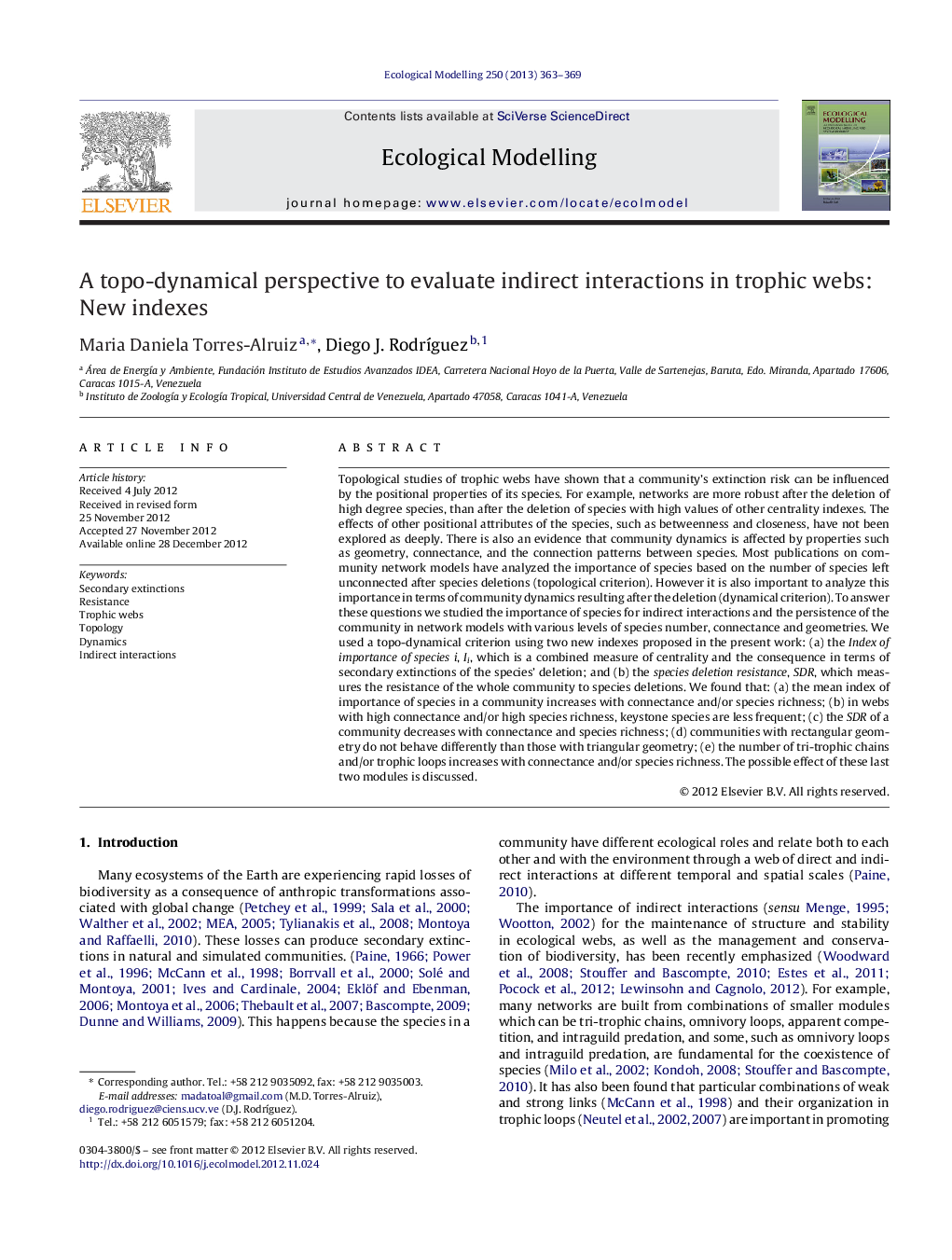| Article ID | Journal | Published Year | Pages | File Type |
|---|---|---|---|---|
| 4376264 | Ecological Modelling | 2013 | 7 Pages |
Topological studies of trophic webs have shown that a community's extinction risk can be influenced by the positional properties of its species. For example, networks are more robust after the deletion of high degree species, than after the deletion of species with high values of other centrality indexes. The effects of other positional attributes of the species, such as betweenness and closeness, have not been explored as deeply. There is also an evidence that community dynamics is affected by properties such as geometry, connectance, and the connection patterns between species. Most publications on community network models have analyzed the importance of species based on the number of species left unconnected after species deletions (topological criterion). However it is also important to analyze this importance in terms of community dynamics resulting after the deletion (dynamical criterion). To answer these questions we studied the importance of species for indirect interactions and the persistence of the community in network models with various levels of species number, connectance and geometries. We used a topo-dynamical criterion using two new indexes proposed in the present work: (a) the Index of importance of species i, Ii, which is a combined measure of centrality and the consequence in terms of secondary extinctions of the species’ deletion; and (b) the species deletion resistance, SDR, which measures the resistance of the whole community to species deletions. We found that: (a) the mean index of importance of species in a community increases with connectance and/or species richness; (b) in webs with high connectance and/or high species richness, keystone species are less frequent; (c) the SDR of a community decreases with connectance and species richness; (d) communities with rectangular geometry do not behave differently than those with triangular geometry; (e) the number of tri-trophic chains and/or trophic loops increases with connectance and/or species richness. The possible effect of these last two modules is discussed.
► The indexes of species importance and species deletion resistance, are proposed. ► Secondary extinctions increase with trophic web complexity. ► The behavior in (2) can be due to an increase of tri-trophic chains and omnivory. ► As complexity increases it is more difficult to find keystone species.
